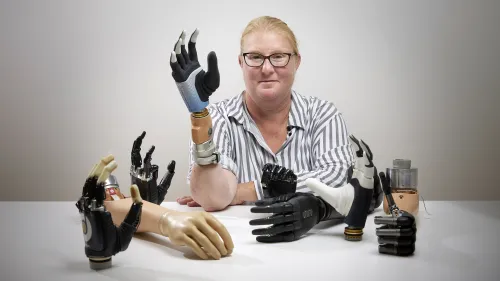Summary:
More than two decades ago, a Swedish woman named Karin lost her right hand in a farming accident, causing her severe phantom limb pain. In 2018, researchers at the Center for Bionics and Pain Research (CBPR) in Sweden used a combination of surgery and AI to connect Karin’s skeleton, muscles, and nerves to a bionic hand. This innovative approach reduced her pain and improved her prosthetic’s control, significantly enhancing her quality of life.
The key to this success lies in a procedure called «osseointegration,» which involves implanting titanium rods into Karin’s arm bones, eliminating the need for a traditional socket that can cause discomfort and pain. Surgeons also removed nerve cell clusters known as «neuromas» from her residual limb, which often contribute to pain in amputees. Electrodes and muscle grafts were used to connect Karin’s nerves and muscles to the titanium rods, enabling bi-directional communication between her residual limb and the bionic hand.
Unlike conventional prosthetics that rely on surface electrodes for control, Karin trained AI algorithms to interpret signals from her arm muscles, improving the reliability and precision of her bionic hand. Karin experienced significant improvements in functionality and a reduction in pain with this integrated system, surpassing the performance of her previous socket-based prosthetic.
Lead surgeon Rickard Brånemark emphasizes that combining osseointegration, reconstructive surgery, implanted electrodes, and AI can revolutionize human function restoration, particularly for those with below-elbow amputations. This development represents a significant milestone in advanced extremity reconstruction and bionics.
The challenge now lies in making such approaches accessible to a wider population, considering the high cost of bionic technology and associated procedures.
Article written by Kristin Houser| Image by Ortiz-Catalan et al.
21/10/2023
Source:
Freethink
https://www.freethink.com/hard-tech/bionic-hand-phantom-limb

